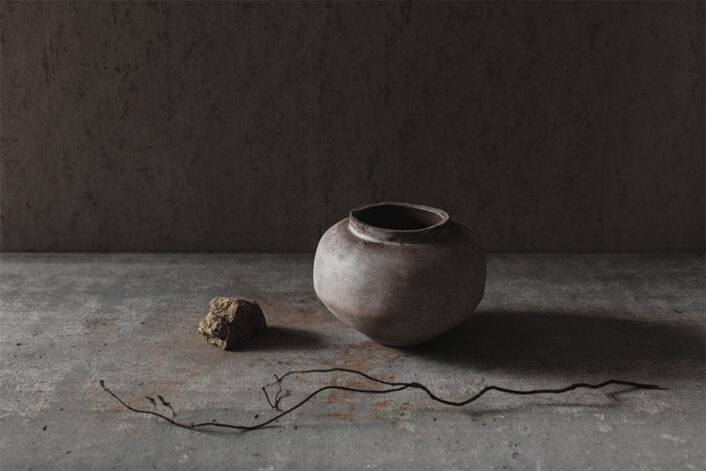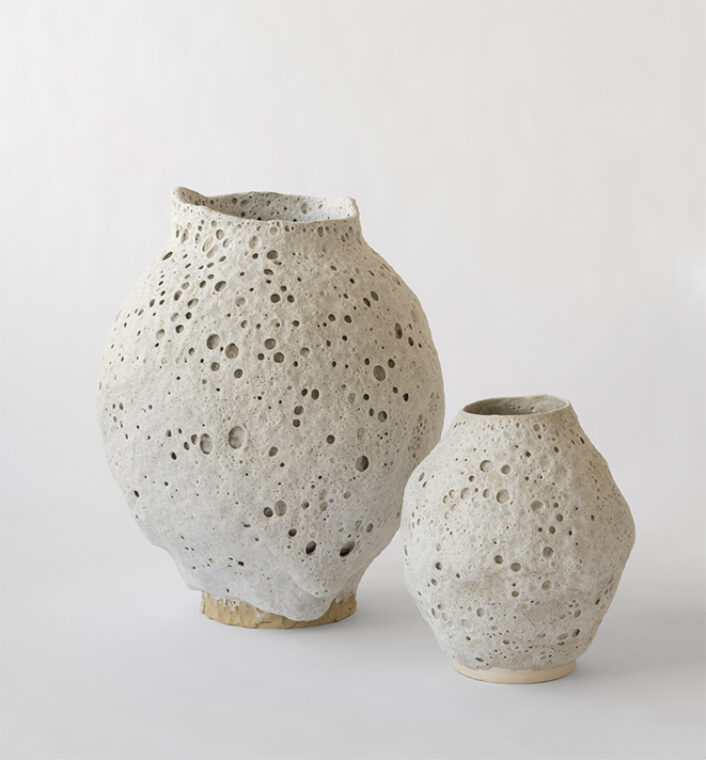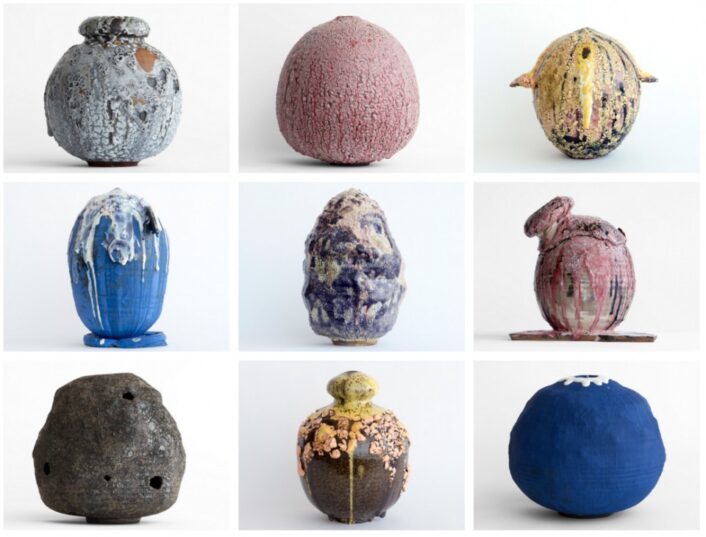Design
D-HAENE Studio
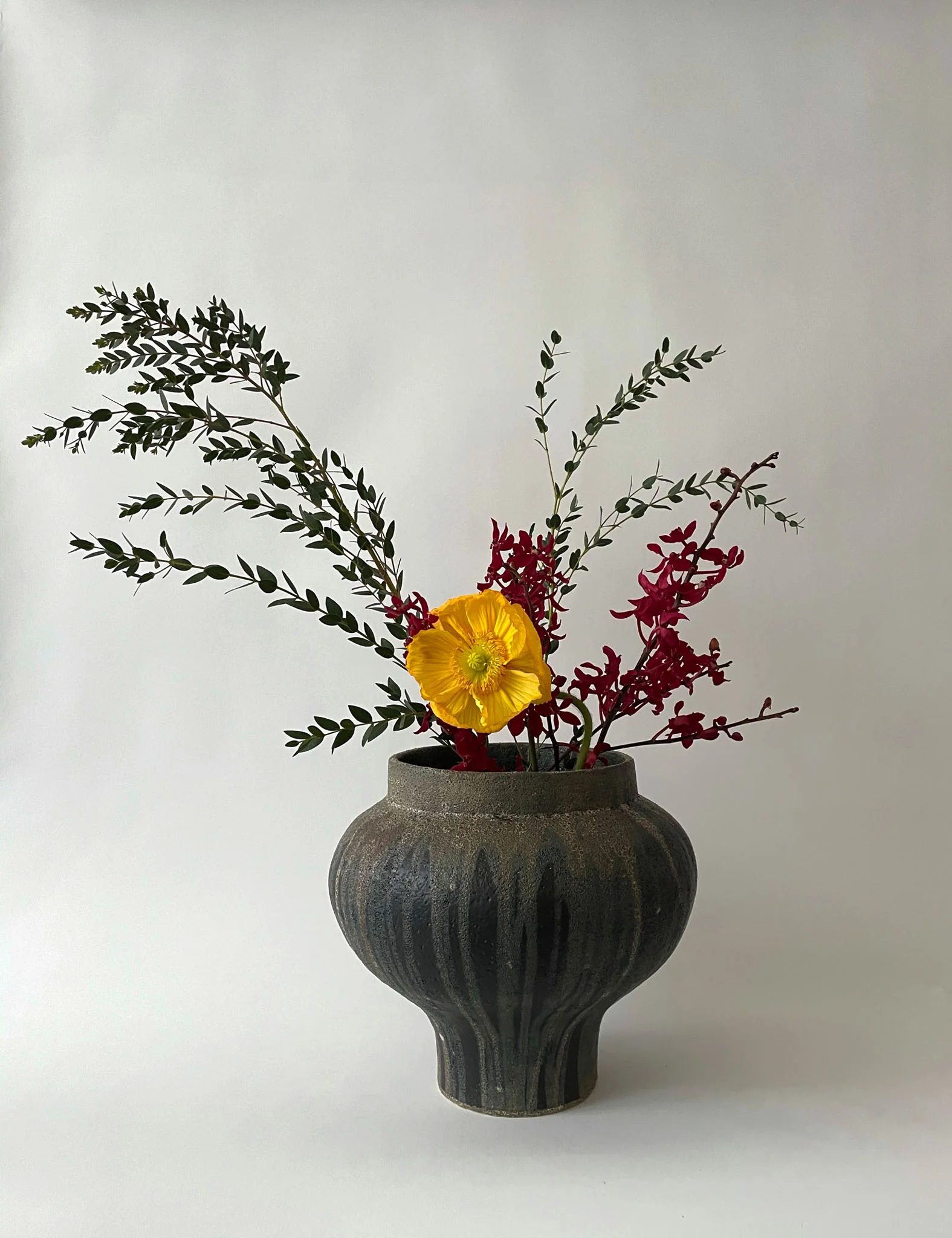
“Terrain .01,” part of the Terrain Series. Hand-sculpted vessel made from sculpture clay. Matte black glaze on the inside and lava glaze on the outside.
Dimensions are: 12″ x 13″, 8.5″ opening
Image courtesy of: D-Haene Studio
Jane Yang-D’Haene is a Korean born and raised, Brooklyn-based ceramic artist; she also also the founder of the immensely successful D-Haene Studio. In 2016, D’Haene starting working with ceramics as a hobby; she learned the technique independently and supplemented the physical part of the work with knowledge about the ancient art form.
D’Haene has spent the last seven years making one-of-a-kind ceramic vessels that are influenced by Korean ceramic forms. She remains motivated by cremains and continues to push the limits of both the material and the forms.

“Moon Jar No. 24″
Dimensions are: 13.5″ x 14”
Image courtesy of: Spartan Shop
For Jane, her first shot at the potter’s wheel was invigorating because she wasn’t creating for clients… rather, she was fabricating for herself. She attended a series of classes… set on improving her elementary skills. Today, at her studio in Industry City in Brooklyn, D’Haene works on both the potter’s wheel and by hand.
D’Haene’s minimalistic forms are quite clearly inspired by her heritage and her love of Korean pottery. Nevertheless, her specific designs are created through a modern perspective. The raw vessels she creates feature unusual and unexpected additions of color and textures that are complex and knotty.
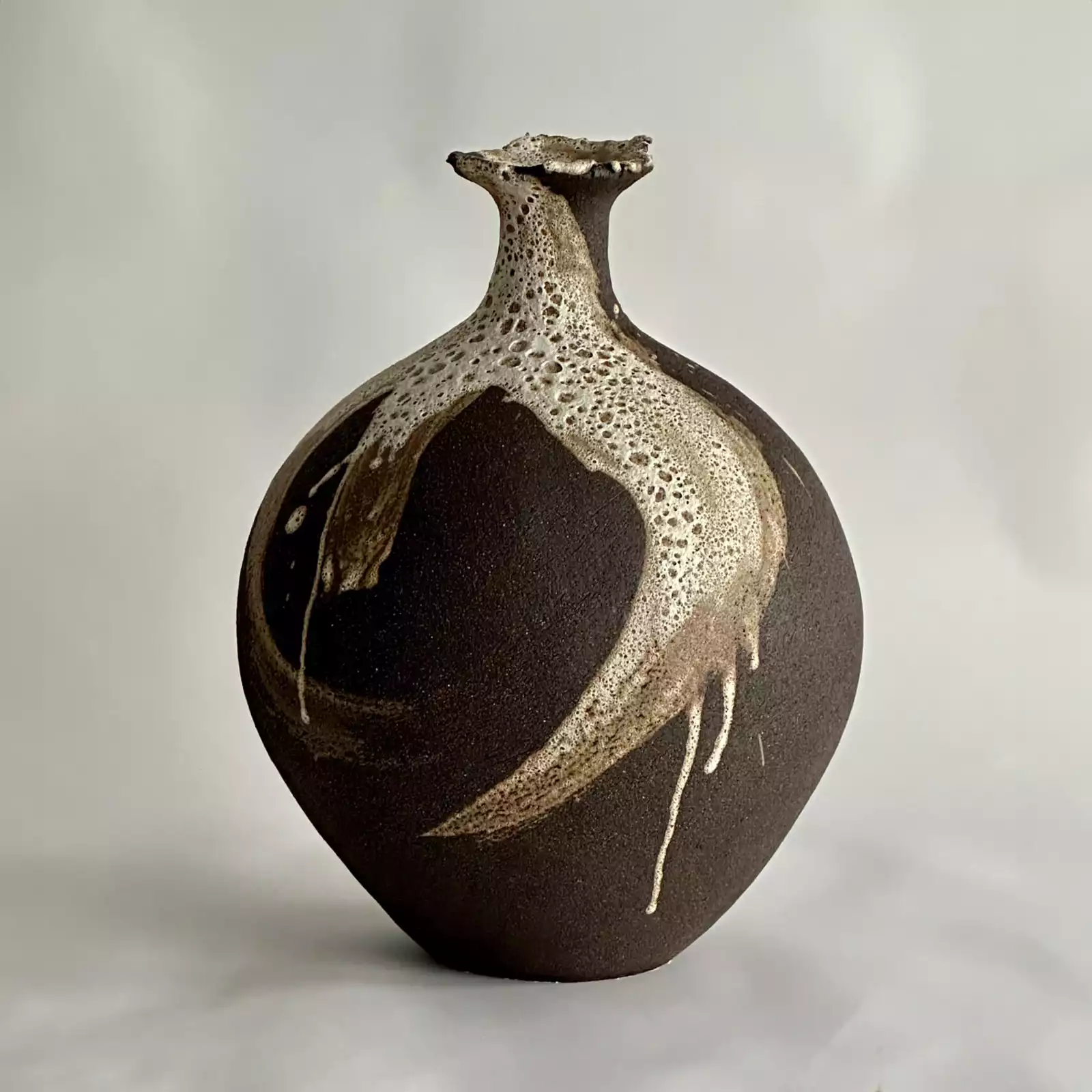
“Untitled,” 2023. Stoneware, slip, and glaze. Shown at Jackson Hole’s Taylor Piggy Gallery.
Dimensions are: 22″ x 16″ x 16″
Image courtesy of: Artsy
For the past three years, Jane has been experimenting with moon jars, icons of traditional Korean pottery that rose to prominence in the late 17th-century. The seemingly simple orbs are made from two wheel-spun halves joined together at a seam. Oftentimes, that seam is smoothed out to portray a faint, pale line. Courtesy of an article in The New York Times by Aileen Kwun, moon jars “represent a balance between technical ingenuity and chance.”
Today’s artists are reimagining moon jars as their own… some garner inspiration from the traditional ceramic forms of similar vessels from other countries such as Iran, China, Greece, and Japan. Other artists glaze in bright colors rather than the earthy pastels that are common in traditional Korean pottery. However at the essence is the understanding that perfection truly unattainable.
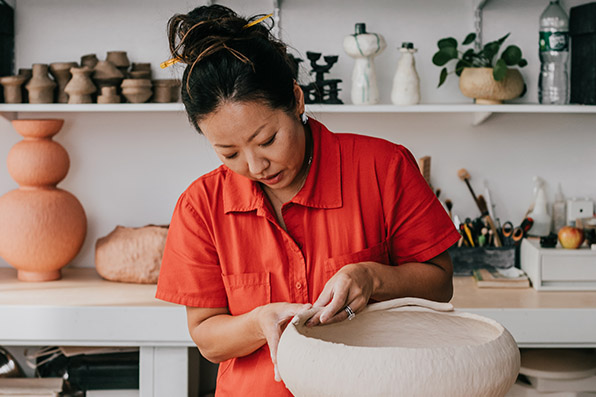
D’Haene at work on a vessel.
Image courtesy of: Industry City
D’Haene’s interpretations of moon jars comes after years of an aversion to the vessel style. She says (courtesy of Cottages & Gardens), “I was never fond of them growing up because my taste was more modern. But now, I think they’re beautiful.” Known for their lunar forms (thus the name) and glossy exteriors, the ceramic style often differs according to their maker.
D’Haene forms her jars with a clay disk base that she layers with 60-80 hand-rolled coils made from porcelain. Once the shape is formed, D’Haene applies her adornments which are “hand-crafted ‘fins’ or amassed clusters of slip (a mix of clay and water).”
With a sharp tool, D’Haene engraves small slashes into the appliqués to ensure that they stick. Finally, she coats the exterior with 100 layers of slip that she applies with a delicate toothbrush. This process is done over the course of several weeks… until a raised, non-uniformed surface is achieved. The final version is bisque fired and either glazed or left bare to reveal the porcelain’s natural properties, then it is re-fired.
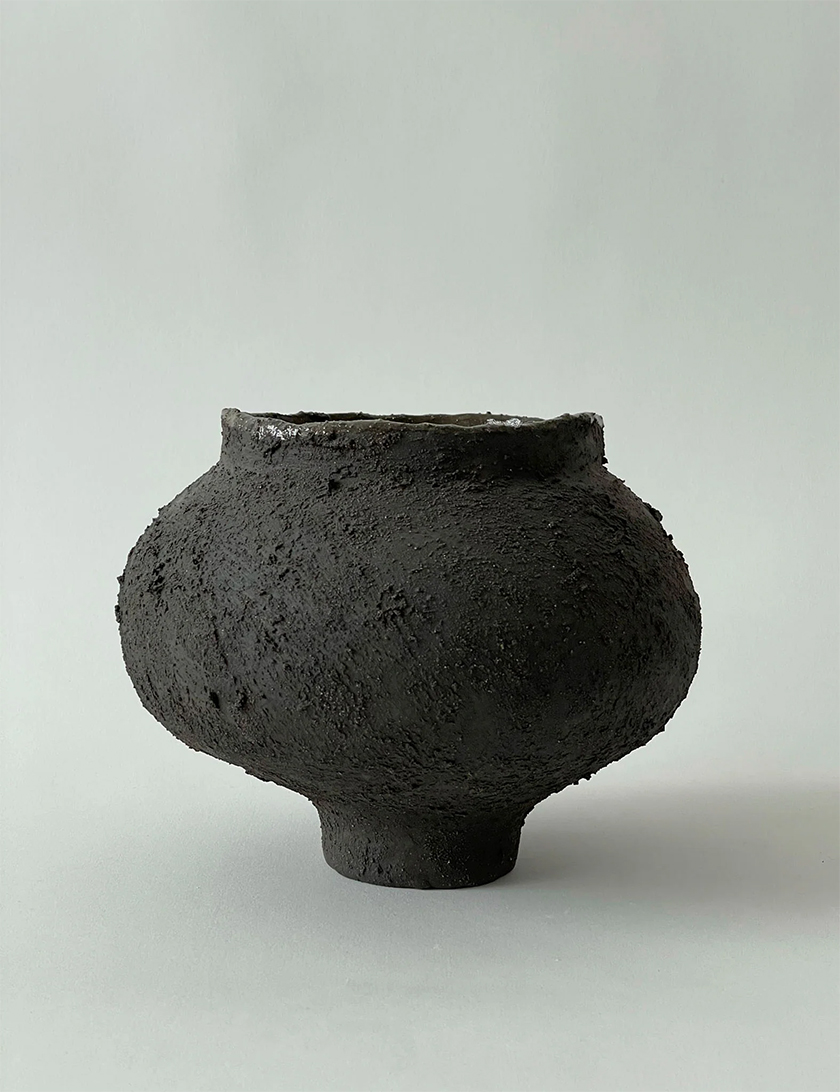
Terrain.07 – Hand sculpted vessel in black sculpture clay inspired by landscape. Clear glaze inside and no glaze outside
Dimensions are: 5 1/2″ x 8″
Image courtesy of: D-Haene Studio
D’Haene’s moon jars differ from the traditional in that they are neither smooth nor white… rather, her unique technique and special use of glaze creates movement and texture on the vessel’s exterior. As a first generation Korean-American, D’Haene feels that her interoperation of moon jars is a way to honor her cultural roots. And she’s learned plenty in the process; she says, “I struggle with being perfect. Moon jars remind me that imperfection is OK.”
